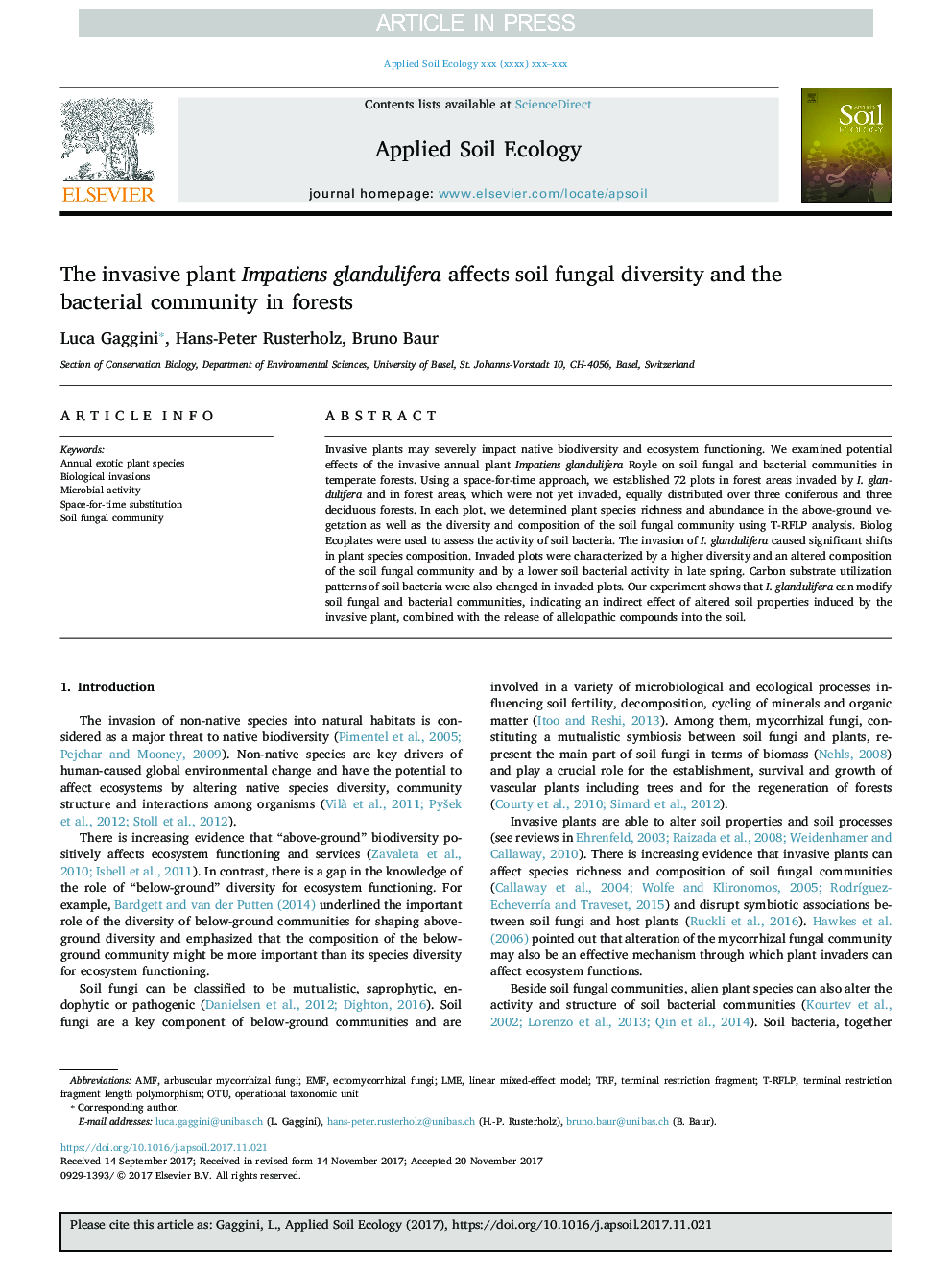| Article ID | Journal | Published Year | Pages | File Type |
|---|---|---|---|---|
| 8846807 | Applied Soil Ecology | 2018 | 9 Pages |
Abstract
Invasive plants may severely impact native biodiversity and ecosystem functioning. We examined potential effects of the invasive annual plant Impatiens glandulifera Royle on soil fungal and bacterial communities in temperate forests. Using a space-for-time approach, we established 72 plots in forest areas invaded by I. glandulifera and in forest areas, which were not yet invaded, equally distributed over three coniferous and three deciduous forests. In each plot, we determined plant species richness and abundance in the above-ground vegetation as well as the diversity and composition of the soil fungal community using T-RFLP analysis. Biolog Ecoplates were used to assess the activity of soil bacteria. The invasion of I. glandulifera caused significant shifts in plant species composition. Invaded plots were characterized by a higher diversity and an altered composition of the soil fungal community and by a lower soil bacterial activity in late spring. Carbon substrate utilization patterns of soil bacteria were also changed in invaded plots. Our experiment shows that I. glandulifera can modify soil fungal and bacterial communities, indicating an indirect effect of altered soil properties induced by the invasive plant, combined with the release of allelopathic compounds into the soil.
Keywords
Related Topics
Life Sciences
Agricultural and Biological Sciences
Ecology, Evolution, Behavior and Systematics
Authors
Luca Gaggini, Hans-Peter Rusterholz, Bruno Baur,
